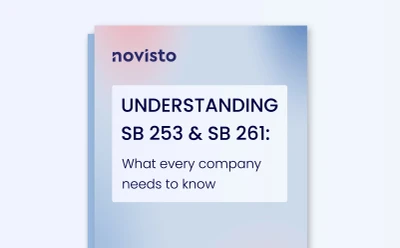
Carbon accounting software offers a comprehensive solution for streamlining the process of measuring, reporting, and analyzing carbon emissions. While the initial costs may appear substantial, they are outweighed by the increasing necessity for businesses to embrace ESG principles and comply with stringent regulations on carbon reporting. Assessing the return on investment (ROI) of carbon accounting software is therefore critical for articulating a strong value proposition to stakeholders.
Calculating the ROI of carbon accounting software
A strong ROI on carbon accounting softwarenot only supports environmental responsibility but also contributes to long-term financial viability, making it a vital tool for companies striving to thrive in a more sustainable and regulated business environment.
By accurately measuring and reporting carbon data, businesses can identify cost-saving opportunities, improve operational efficiency, and enhance their overall sustainability performance. When attempting to assess the ROI of any carbon accounting platform, there are a few key areas you should consider:
Reduced operational costs
Measuring GHG emissions with carbon accounting software can help reduce a company’s operational costs through supply chain optimization. By tracking emissions and energy consumption, organizations can pinpoint areas for improvement, leading to cost-saving opportunities and good ROI through increased energy efficiency and reduced resource wastage.
Penalty avoidance
Carbon accounting plays a crucial role in penalty avoidance and cost savings for businesses by promoting transparency, identifying inefficiencies, and mitigating environmental risks. Accurate measurement and reporting of carbon emissions ensure compliance with regulatory requirements, reducing the risk of non-compliance penalties, litigation, and reputational damage.
Market position
In an era of conscious consumerism, accurate carbon accounting fosters transparency, building trust among stakeholders. Openly disclosing environmental data demonstrates a company’s willingness to be held accountable for its carbon footprint—which can also be a point of differentiation.
In some sectors, access to green markets or opportunities for government incentives and subsidies is contingent on meeting specific carbon reduction goals. Carbon accounting helps companies qualify for these markets, expanding their business prospects.

What to look for in carbon accounting software
How do you maximize the ROI of your carbon accounting purchase? Consider the key challenges that it solves. For instance, two notable areas where cost benefits can be achieved are supplier management and reporting & compliance.
Supplier management
Carbon accounting is a powerful tool for effective supplier management. It offers supply chain visibility by assessing the carbon footprint of the entire chain, enabling organizations to identify carbon-intensive suppliers and evaluate their environmental impact. Given that supply chains make up a bulk of organizations’ greenhouse gas (GHG) emissions—more than 90%, according to the US EPA—organizations are increasingly “find[ing] ways to measure and lower their GHG emissions throughout their supply chains.”
Carbon accounting also:
- Facilitates sustainability assessments - this allows companies to integrate supplier sustainability efforts into evaluation processes and collaborate with them to set mutual carbon reduction goals.
- Aids in tracking supplier performance - which enables organizations to identify areas for improvement, and mitigate environmental risks within the supply chain.
- Helps companies meet stakeholder expectations - this also includes those of customers and investors who increasingly demand sustainable supply chain practices, thereby enhancing overall supplier management and strengthening the company's environmental and business objectives.
Reporting and compliance
Far from a passing trend, carbon reporting legislation is proliferating on a global scale. This means that emissions reporting has become mandatory for companies doing business in particular jurisdictions. For example, companies doing business in the EU are subject to the Corporate Sustainability Reporting Directive (CSRD), which will require emissions disclosures as of 2024 (including scope 3 value chain emissions). In the United States, California’s Climate Disclosure Accountability Act as well as the SEC climate rule (notwithstanding its recent pause by the Fifth Circuit U.S. Court of Appeals) will also require varying degrees of GHG reporting.
When considering ROI, carbon accounting software facilitates the disclosure process by streamlining data collection and reporting, ensuring that organizations meet their regulatory obligations accurately and on time. After emissions are accounted for, carbon software facilitates the verification process, making it easier for external auditors to confirm the accuracy of reported emissions data. This verification is often required for compliance with emissions trading schemes and various carbon reduction programs.
Finding a carbon accounting software
Selecting the right carbon accounting software for your organization involves assessing your specific requirements. Do you need basic carbon emissions tracking, or more advanced sustainability reporting? Consider your industry and the level of detail required for your operations. Ultimately, it’s about choosing a software that can grow with your business, one that is both scalable to accommodate increasing data needs and adaptable to the ever-evolving disclosure landscape.
Novisto’s all-in-one ESG management solution seamlessly collects and processes emissions data from every corner of your organization and supply chain—no matter the format. This makes it the ideal software for emissions audits and all-around business intelligence.
Learn more about how Novisto can help power you to net zero. Book a demo today.
